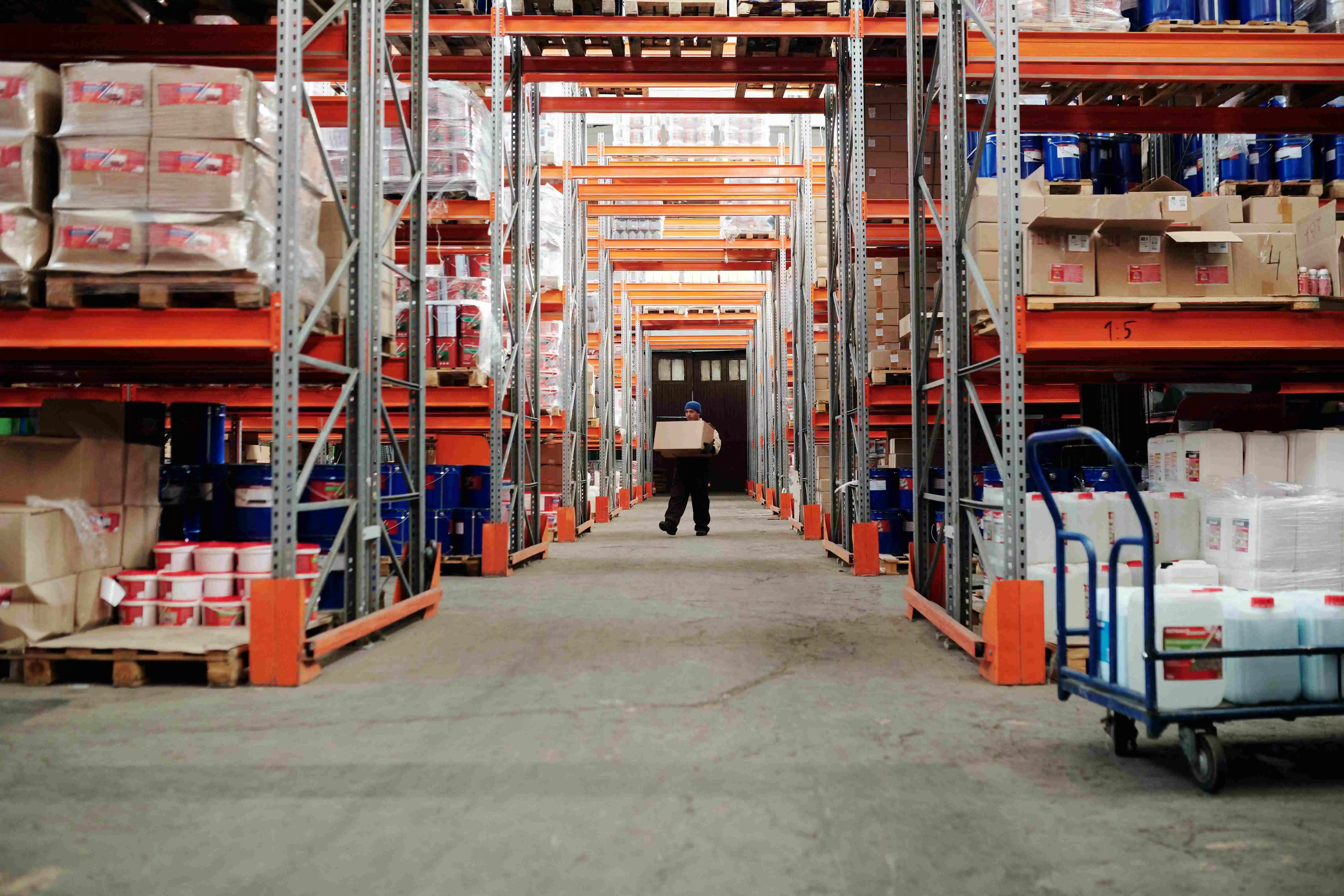In business management, operational efficiency relies on a deep understanding of logistics flows. These flows determine the speed, accuracy, and profitability of operations. Logistics flows are the engine behind the logistical success of businesses. Let’s explore this in this article.
- What is Logistics?
- Types of Logistics Flows
- Advantages of Effective Management of Logistics Flows
- How to Improve Logistics Flow?
- Stages of Logistics Flow
- Factors Influencing Logistics Flow
What is Logistics Flow?
Definition of Logistics Flow
Logistics flow represents the coordinated movement of goods, information, and resources throughout the supply chain. It encompasses activities related to:
- Transportation,
- Inventory management,
- Planning,
- And goods distribution.
In the context of transportation and logistics companies, logistics flow is at the core of operations, ensuring a smooth synchronization of various stages.
The efficiency of logistics flow relies on precise orchestration of the involved elements, aiming to minimize costs while maximizing customer satisfaction. Optimal management of logistics flows not only ensures product availability but also optimizes delivery times, meeting the growing demands of the market.

Objectives of Logistics Flow
The objectives of logistics flow within transportation and logistics companies are multiple and converge toward overall performance. Firstly, it aims to reduce operational costs by optimizing inventory management, streamlining transportation routes, and minimizing delays. This optimization contributes to enhancing the company’s competitiveness in the market.
Another objective of logistics flow is to enhance supply chain visibility. By closely monitoring each process step, companies can anticipate potential issues, swiftly respond to demand changes, and ensure timely delivery of goods. Transparency in logistics flow becomes a major asset in strategic decision-making.
Furthermore, logistics flow contributes to strengthening customer relations by ensuring optimal satisfaction. Short and reliable delivery times, coupled with effective return management, are essential elements for customer loyalty.
In conclusion, logistics flow within transportation and logistics companies embodies an essential pillar of operational management.
Types of Logistics Flows
Internal Logistics Flows
Internal logistics flows constitute the backbone of transportation and logistics companies, playing a central role in the daily management of operations. These flows encompass the movement of goods throughout the internal process, from procurement to distribution of finished products.
The initial stage, the procurement flow, represents the starting point. It involves managing relationships with suppliers to ensure timely availability of necessary raw materials. Precise synchronization of this flow directly contributes to overall operational quality and efficiency.
Subsequently, the production flow takes over, where each phase of the process is meticulously orchestrated. The goal is to minimize downtime, thereby optimizing resource utilization while maintaining high quality standards.
Storage and distribution flows complete the internal cycle. An effective inventory management system is essential to maintain optimal levels while minimizing costs related to inventory holding. Distribution, the last stage of the internal process, involves delivering finished products to customers quickly and reliably, thereby enhancing the company’s reputation.
External Logistics Flows
External logistics flows represent the company’s connection with its external environment, involving key relationships with suppliers, partners, and customers. This external dimension holds strategic importance for a transportation and logistics company.
Managing relationships with suppliers constitutes the first step of external flows. Establishing strong partnerships based on trust and quality is essential to ensure a stable supply chain.
Logistics partnerships with specialized service providers also play a vital role. Choosing partners that share the company’s vision for efficiency, sustainability, and customer service is crucial to expanding the company’s operational reach.
Finally, external logistics flows encompass direct relationships with customers. A customer-centric approach, aiming to understand and meet individual needs, enhances the company’s reputation as a sector leader. This particular attention to customer satisfaction contributes to forging long-term relationships with the clientele.

Advantages of Effective Management of Logistics Flows
Cost Optimization
Optimizing logistics flows represents a major strategic lever for transportation and logistics companies. By streamlining processes, they manage to significantly reduce their operational costs.
Rigorous management of logistics flows eliminates inefficiencies, optimizes transportation routes, and minimizes waiting times. These meticulous adjustments result in substantial savings on fuel costs, vehicle maintenance, and personnel expenses. By adopting a proactive approach in route planning and inventory management, companies can achieve significant economic gains.
Improved Customer Satisfaction
Customer satisfaction holds significant importance. Effective management of logistics flows ensures fast and reliable delivery of goods. This meets customers’ expectations regarding delivery times. Timely and smooth shipping contributes to reinforcing customers’ trust, a key element in fostering loyalty.
The traceability of flows, made possible by advanced tracking systems, also offers transparency to customers. They can track their orders in real-time, improving communication and reducing the risk of disputes.
Enhanced Competitiveness
In a highly competitive sector such as transportation and logistics, even minor advantages can make a difference. Implementing effective logistics flow management provides a significant competitive advantage. By reducing delivery times, minimizing costs, and maximizing operational efficiency, companies position their offerings advantageously in the market.
Proactive management of flows also enables quick adaptation to demand fluctuations and logistical contingencies. This adaptability is a major asset for remaining competitive in an ever-evolving environment.
How to Improve Logistics Flow?
Logistics Flow Strategy
The first step to improving logistics flow is to develop a well-defined strategy. This involves a deep understanding of:
- Specific company needs,
- Market requirements,
- Customer expectations.
Clearly defining objectives helps direct efforts toward tailored solutions. For example, if the goal is to reduce delivery times, the strategy could focus on optimizing delivery routes and using advanced shipment tracking technologies.
Evaluation of Internal Systems and Operations
Thorough evaluation of internal systems and operations is imperative. The use of modern technologies, such as real-time tracking systems, can facilitate this evaluation by providing precise data on operational performance. For example, by analyzing waiting times at loading and unloading points, a company can take steps to reduce delays.
Real-time vehicle tracking allows you to improve your teams’ productivity and your customer satisfaction! It’s a tool not to be overlooked, and Nomadia has understood this well!
Implementation of Supply Chain Management
Supply chain management is at the heart of an efficient logistics flow. By seamlessly integrating suppliers, manufacturers, distributors, and retailers, a company can minimize delays, reduce costs, and improve end-to-end visibility. Process automation can also contribute to increased operational efficiency. For example, using automated inventory management systems can help maintain optimal product levels, avoiding shortages or surpluses.
Stages of Logistics Flow
- Strategic Planning
Strategic planning is upstream of logistics flow. It requires meticulous anticipation of needs in:
-
- transport
- stockage
- distribution
It ensures optimal resource utilization while minimizing costs.
- Procurement and Purchasing
Selecting reliable suppliers and establishing strong partnerships ensure the constant availability of raw materials and necessary products, preventing potential costly delays.
- Storage and Warehousing
Storage and warehousing play a central role in logistics flow. Optimal warehouse management, with automated inventory management systems, helps maximize operational efficiency.
- Order Preparation
Order preparation is a fundamental step in logistics flow. Precise and swift order management, supported by automated systems, ensures timely shipping.
- Transportation and Distribution
Thoughtful selection of transportation modes is crucial. Whether by land, sea, air, or rail, optimizing transportation is necessary for ensuring fast and reliable delivery. Effective coordination between distribution chain links is also crucial.
- Stock Monitoring and Management
Constant monitoring of stock levels allows for quick reactions to demand fluctuations. Advanced tracking systems, incorporating RFID technology, for example, offer real-time visibility, facilitating proactive stock management.
- Customer Service and Returns
Customer satisfaction remains at the core of success. Ensuring exceptional customer service, including effective returns management, is an important step in logistics flow, strengthening customer trust and fostering loyalty.
In summary, a well-orchestrated logistics flow, from strategic planning to customer satisfaction, contributes to the operational efficiency of transportation and logistics companies. Each meticulously executed step promotes the company’s sustainability and overall success.

Factors Influencing Logistics Flow
The success of transportation and logistics companies closely depends on effective management of logistics flows. They ensure process fluidity and customer satisfaction. Let’s dissect the main factors that exert a decisive influence on these flows.
- Market Demand
The cornerstone of logistics flow lies in the ability to anticipate and respond to market demand fluctuations. Thorough analysis of trends and seasonal variations allows for adjustments in supplies and routes, ensuring an agile response to changing needs.
- Technology and Automation
In the current era, judicious adoption of technology is essential to optimize logistics flows. From real-time tracking systems to warehouse automation solutions, each link in the logistics chain can be strengthened by innovative tools. These advancements promote visibility, reduce errors, and increase operational efficiency.
- Inventory Management
Well-managed inventory is a major lever to maintain smooth logistics flows. Striking a balance between adequate supply and avoiding surpluses requires precise planning.
- Strategic Partnerships
Strong relationships with partners play a role in the fluidity of logistics flows. Whether with suppliers, carriers, or logistics service providers, well-established partnerships facilitate communication, strengthen collaboration, and reduce potential friction throughout the chain.
- Operational Flexibility
The ability to adapt quickly to unforeseen changes is a major asset. Alternative routes, operational flexibility allows bypassing potential obstacles and maintaining a constant flow, even in the face of unexpected disruptions.

